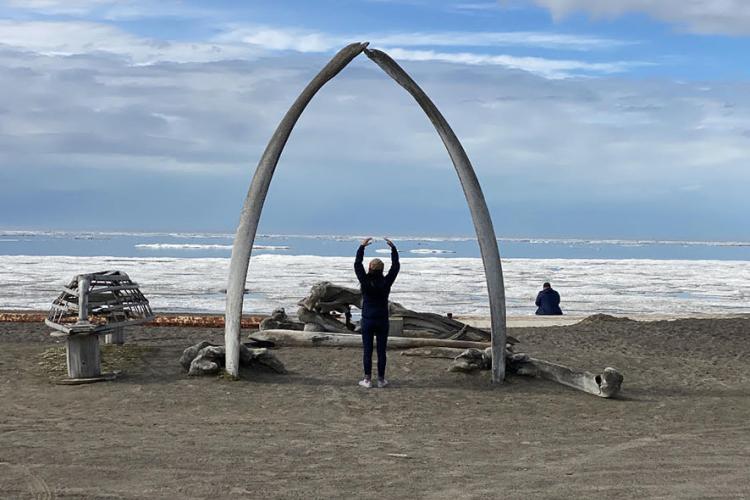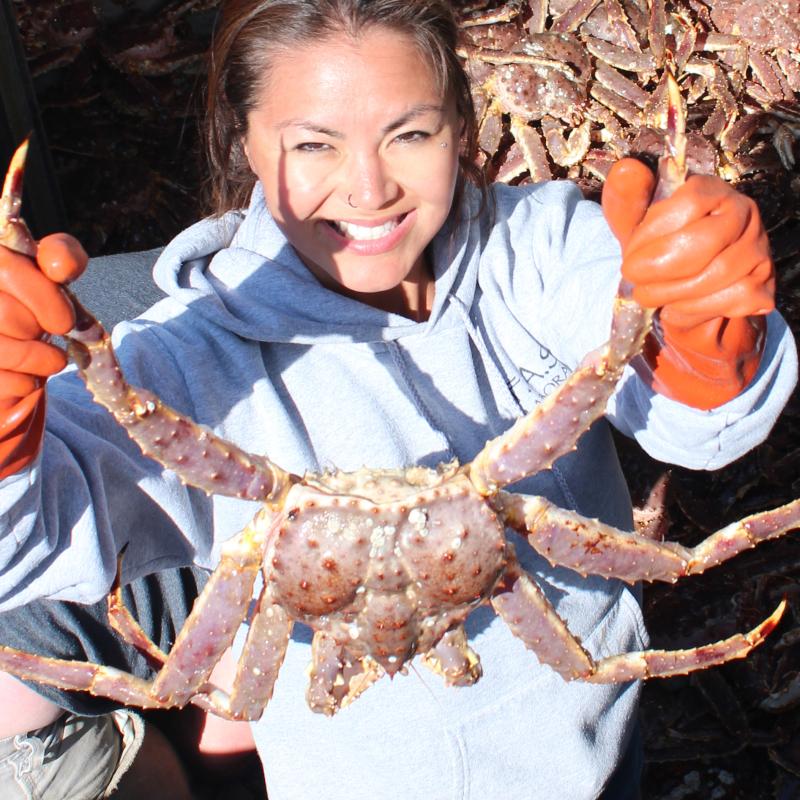Throughout this blog, I will document and share my experiences as the Alaska Fisheries Science Center's first Tribal Research Coordinator.
Central to my position is building and strengthening relationships and new science partnerships between Alaska Native communities and NOAA Fisheries researchers.
I'm excited to help the Science Center identify opportunities for scientific collaboration and co-production of research and to share what we are able to accomplish together with all of you!
Alaska marine ecosystems are experiencing some dramatic changes that are profoundly affecting the animals and people who live there. By combining our collective experience and understanding of these changes, we will be better able to meet the challenges that lie ahead and protect and sustain Alaska ecosystems.
To start, I'd like to share some personal reflections on my recent visit to Utqiagvik, Alaska during the annual Whaling Festival.
Sunrise at 12AM, Sunset at 12AM
Utqiagvik, Alaska is the most northern community in the United States and is home to one of the harshest climates on Earth. In late June, summer solstice disembarks 80+ days of continuous sunshine. The local weather station aired on the radio, “With a low of 34 degrees and a high of 41.” Also associated with summer solstice is the ancient Native tradition known as Nalukataq.
Nalukataq is the spring whaling festival where Inupiat Eskimos of Northern Alaska recognize and celebrate the successful and safe bowhead whaling season. It is an all-day event that begins with the raising of the whaling crew’s flag and ends with traditional Native dancing. In between, people feast on the catch and participate in the infamous Eskimo blanket toss.
On June 29, five whaling crews shared portions of their bounty among other Native delicacies including goose, caribou and Eskimo ice cream, to name a few. People from the community, surrounding villages, and all over the State ate and visited, greeting each other “Happy Nalukataq!” Laughter filled the air and the food brought warmth throughout the cold and windy day.
Following the feast was the Eskimo blanket toss, termed Nalukataq. The blanket toss is customarily connected to the hunt. Hunters used the blanket toss as a way to see for miles out on the water with the hope of spotting a whale (“Traditional binoculars”). The blanket is sewn together out of several walrus and bearded seal skins. For hours, people were tossed more than 20 feet in the air with some including advanced tricks, such as flips and other sorts.
Toward the end of the night the Inupiat Eskimo dancing started and continued into the early hours of the next day. In their fanciest parkas, Captains, their wives and crew members performed various songs encompassing stories and ceremonial dances. Drumbeats echoed throughout the local High School Gymnasium, providing a rhythm for not only those partaking in the ceremonial dance but also the onlookers.
Whaling is a major part of the rich history and culture of the Inupiat Eskimo. This is in part owing to our living Inupiat Ilitqusiat – Eskimo Values, and its future generations, as it was passed down to us from our Ahnas (grandmothers) and Taatas (grandfathers). I find the whale season comprises many of these values, including Hard Work, Sharing, and Spirituality.
Hard work – all the work prepping before and after the season.
Sharing – the ability to share not only the catch but the culture as a whole.
Spirituality – Our people live in co-existence with the bowhead. Something that really resonated with me was “We celebrate the life of that whale, and the spirit lives amongst us.
I am very appreciative for the opportunity to make it up to Utqiagvik to share this significant celebration.





